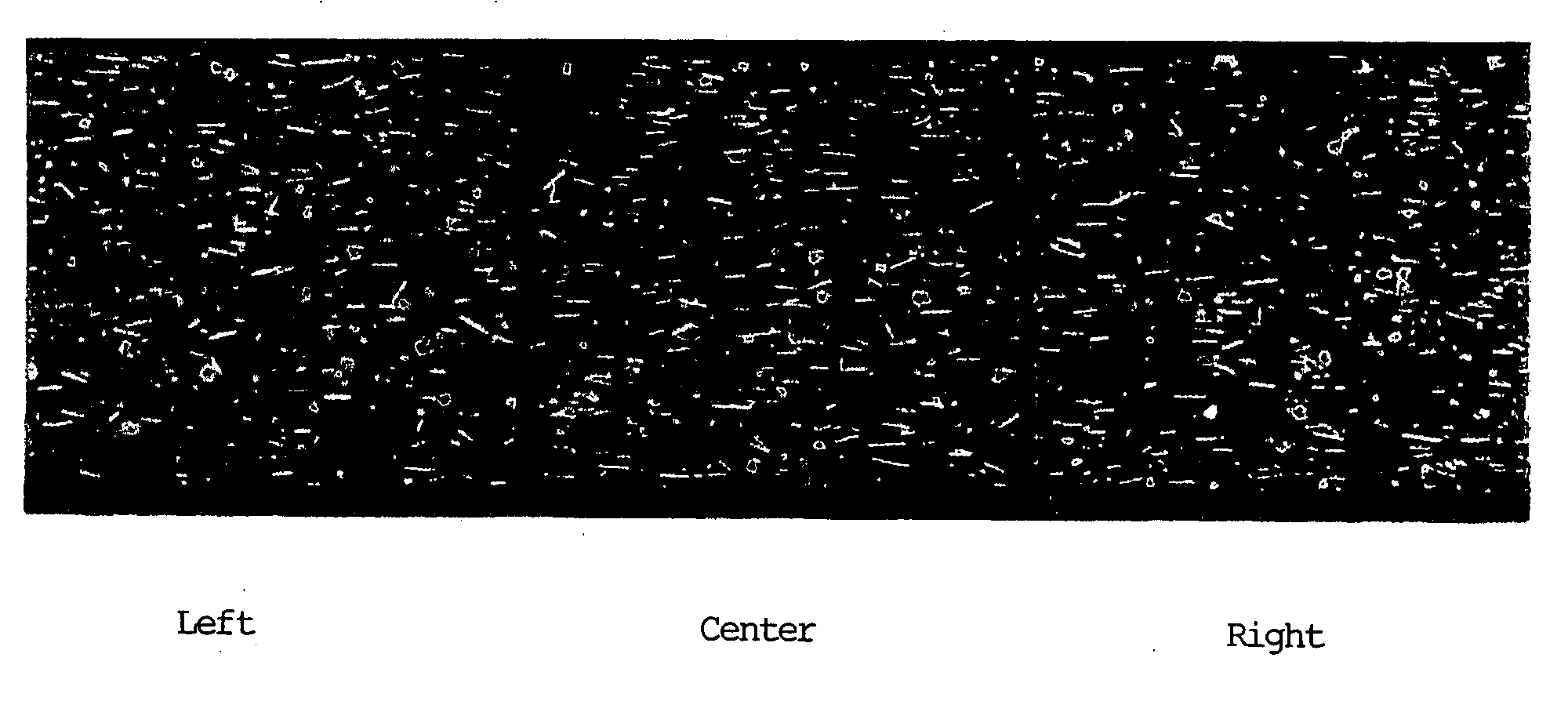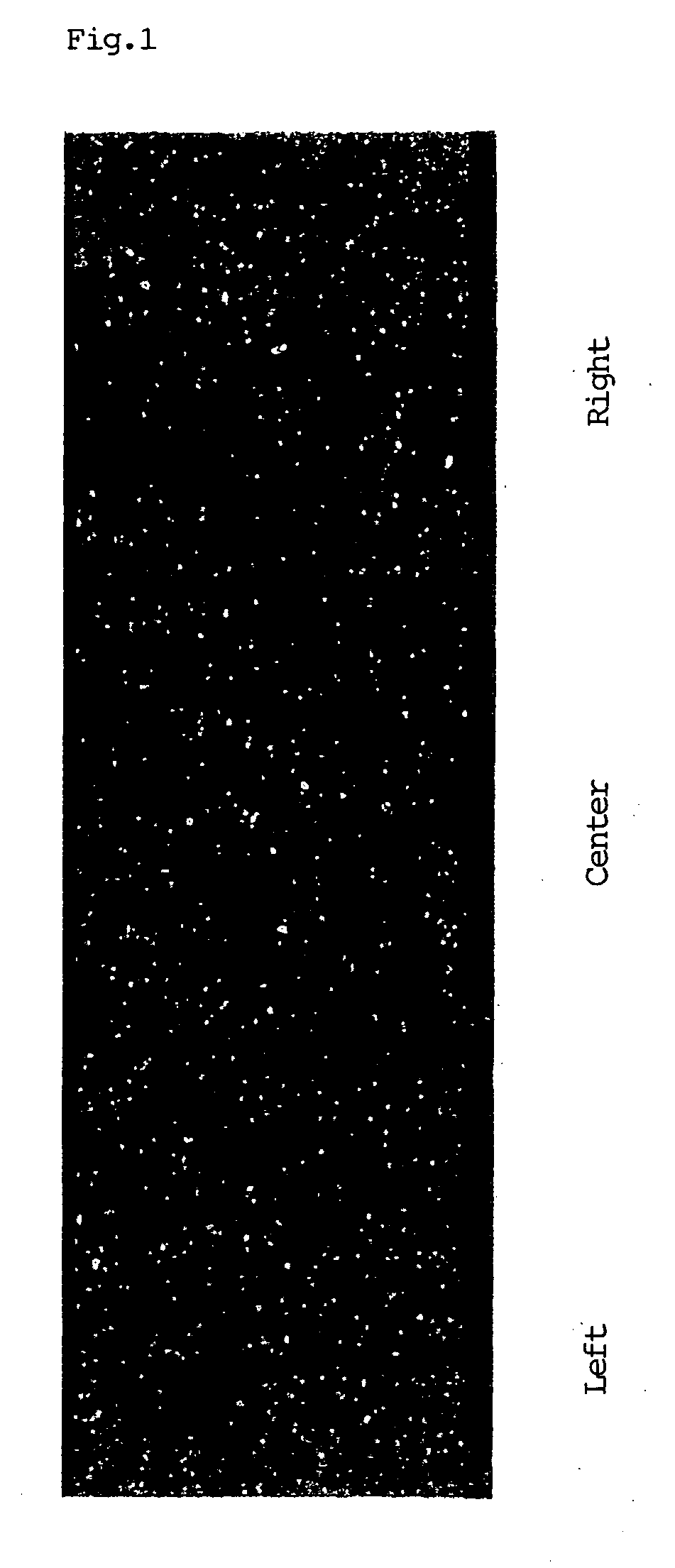Al-Ni-rare earth element alloy sputtering target
- Summary
- Abstract
- Description
- Claims
- Application Information
AI Technical Summary
Benefits of technology
Problems solved by technology
Method used
Image
Examples
example 1
[0046] N2 gas was blown against the Al alloy materials No. 1 through No. 10 and No. 14 through No. 16 having the compositions shown in Table 1 during spray forming under the conditions provided in Table 1, intermediate materials (whose densities were approximately from 50 to 60%) were consequently obtained and then encapsulated and degassed, and thereafter pressed using an HIP machine. These were forged into plate-shaped materials, rolled (at the total processing rate of 80%, the processing rate per pass of 6 through 10% and the finish rolling temperature of 400 degrees Celsius) so that the plate thickness would be approximately the same as that of the final products (targets), annealed (400 degrees Celsius) and then mechanically processed, thereby obtaining Al alloy plates of 8 mm t×600 mm×800 mm. Other conditions for spray forming than those appearing in Table 1 are as follows: [0047] Superheat: 200 degrees Celsius [0048] Over pressure: initial . . . 0.003 MPa end . . . 0.01 MPa
[...
example 2
[0053] Al alloy materials obtained by spray forming under the recommended conditions were rolled under various conditions, and the structures of Al alloy plates and the influence over film deposition were examined. More specifically, after obtaining intermediate materials by spray forming under similar conditions to those used for No. 1 through No. 10 described in Example 1, the intermediate materials were encapsulated and degassed, and thereafter pressed using an HIP machine. These were forged into plate-shaped materials, rolled under the conditions shown in Table 2, annealed (400 degrees Celsius) and then mechanically processed, thereby obtaining Al alloy plates of 8 mm t×600 mm×800 mm.
[0054] As in Example 1, a cross sectional surface of each Al alloy plate thus obtained perpendicular to the plane of each Al alloy plate was observed with a microscope, and the number of compounds whose aspect ratio was 2.5 or higher and whose equivalent diameter was 0.2 μm or larger was counted. A...
PUM
| Property | Measurement | Unit |
|---|---|---|
| Fraction | aaaaa | aaaaa |
| Angle | aaaaa | aaaaa |
| Diameter | aaaaa | aaaaa |
Abstract
Description
Claims
Application Information
 Login to View More
Login to View More - R&D
- Intellectual Property
- Life Sciences
- Materials
- Tech Scout
- Unparalleled Data Quality
- Higher Quality Content
- 60% Fewer Hallucinations
Browse by: Latest US Patents, China's latest patents, Technical Efficacy Thesaurus, Application Domain, Technology Topic, Popular Technical Reports.
© 2025 PatSnap. All rights reserved.Legal|Privacy policy|Modern Slavery Act Transparency Statement|Sitemap|About US| Contact US: help@patsnap.com



